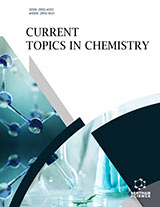Abstract
Modern artificial heterostructures control redox reactions at the catalyst's
active sites by effectively separating charges and transporting excitons with the help of
light sources. Regarding environmental remediation, the Z-scheme—particularly in the
degradation and mineralization of organic pollutants—plays a crucial role.
Appropriately designed photocatalysts with Z-scheme have several benefits over
conventional photocatalytic processes, including improved charge separation and
effective redox process management in response to visible light. It provides the way for
the creation of newer and more effective photocatalysts because it is said to make
reduction and oxidation processes easier than with the constituent single precursor. In
contrast to other heterostructure schemes like the Type-I and Type-II schemes,
heterostructures with the Z-scheme mechanism attracted a lot of attention.
About this chapter
Cite this chapter as:
Suresh Kumar Pandey, Dhanesh Tiwary ;Z-scheme: A Photocatalysis for the Remediation of Environmental Pollutants, Advances in Dye Degradation (2023) 1: 143. https://doi.org/10.2174/9789815179545123010009
| DOI https://doi.org/10.2174/9789815179545123010009 |
| Publisher Name Bentham Science Publisher |






















